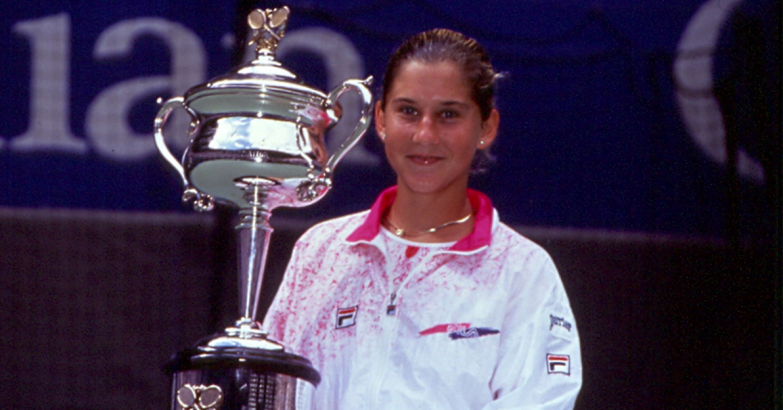TIME MACHINE: 1991
After visiting 1990 with Boris Becker, today we land in 1991 – a year full of energy and change. On 6 August, British physicist and computer scientist Sir Tim Berners-Lee launched the world’s first web server (HTTPD) and the very first browser/editor. This moment marked the birth of the Internet. Meanwhile, the world of art and music was also undergoing a revolution. Grunge music took over, led by Nirvana’s legendary album Nevermind. In cinema, The Silence of the Lambs by Jonathan Demme became the first thriller to win an Oscar for Best Picture.
In tennis, 1991 belonged to Monica Seles. She was the number one seed and brought a bold, new style to the court. Born on 2 December 1973 in Novi Sad, Serbia, Monica came from a Hungarian family. Her father, a cartoonist, was also her first coach – training her in the car park under their home. This was partly due to a lack of money, but also because girls were not allowed on the few local courts. With no children’s racquets available in shops, young Monica had to use her father’s heavy one, which helped her build the strength that became her trademark. Like Jennifer Capriati, Monica was a tennis prodigy. At just 11 years old, she won the Orange Bowl in Miami. She later moved to the United States with her family and trained at the famous Nick Bollettieri Academy. In 1989 she turned professional, and in 1990 she made history as the youngest player ever to win the French Open – a record that still stands.
But Monica’s story isn’t only about titles and trophies. She had a revolutionary style on court. She was the first player to combine powerful shots with sharp, sudden cries – a tactic meant to intimidate opponents. This earned her the nickname ‘Moanica’, which wasn’t always well received. Wimbledon officials often asked her to quiet down. She was also known for her relentless rhythm, which wore down opponents, and her two-handed forehand and backhand – earning her the nickname quadrumane (four-handed) from Italian journalist Gianni Clerici. As writer Davide Morganti explains in I destini di Monica Seles (66thand2nd, 2024), Monica also represented something bigger. In the 1990s, Serbia was going through major changes. Her story reflected the spirit of a new Europe, after the fall of the Berlin Wall and the collapse of the Soviet Union – just as Boris Becker symbolised a newly unified Germany.
Monica Seles has always had a passion for fashion, and her golden years were closely tied to FILA. The brand welcomed her as an athlete, muse and model. Over the years, she wore FILA-designed tennis dresses, tracksuits, and shoes known for their pastel shades, bright colours, and bold floral or geometric patterns. She enjoyed presenting these collections in fun, quirky photo shoots – always comfortable, always herself.“The public sees me as a prodigy,” she once said. “Was it talent? Was it hard work? I don’t know. What I do know is that if you want to reach the top, you have to want to play all day, every day.”
Torna agli articoli!


